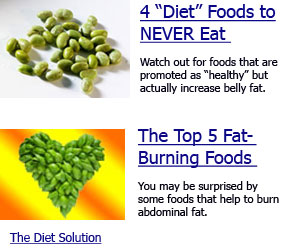
Vinegar Offers Miraculous and Mundane Uses
Friday, July 30, 2010 by: Alice E. Marson, citizen journalistSee all articles by this author
Email this author

|
In biblical times, vinegar was used as a flavoring agent, as an energizing drink, and as medicine. It is mentioned eight times in both the Old and New Testaments. In Ruth 2:14 Boaz invited Ruth to eat bread dipped in vinegar. Julius Caesar's army, the Greeks, and the Romans all kept vinegar vessels for healing and flavoring. Even Christopher Columbus in 1492 used barreled vinegar to prevent scurvy. The American Civil War soldiers used vinegar, also.
There are several kinds of vinegars, such as red wine, rice, and balsamic. Vinegar can be made from almost any fruit; however, apple cider vinegar is the most nutritious, notable and popular. There is, also, synthetic vinegar which, of course, has no nutritive value.
Natural, (undistilled) organic, raw vinegar with its sharp, sour taste can really be called one of Mother Nature's most perfect foods. It is made from fresh, crushed apples which are then allowed to mature naturally in wooden barrels as wood seems to "boost" the natural fermentation. The bacteria in the air convert the alcohol into acetic acid, thus producing vinegar.
Real, organic, apple cider vinegar is quite healthy, containing 30 important nutrients, 12 minerals (especially the all important potassium), over six vitamins, essential acids, and enzymes. It is the oldest cooking ingredient, especially popular in the U.S., and is used in marinades, vinaigrettes, salad dressings, chutneys, and as a food preservative. Used by Wiccans, healers, herbalists and aroma therapists, vinegar is a self-made cure, a "cure all," for dozens of ailments. Apple cider vinegar is an old folk remedy claimed to have a plethora of benefits. It is good for insect bites, sunburn, digestion and bowel functions, headaches, arthritic pain, weight loss, urinary tract infections, itching and other skin conditions. Vinegar is one of the most underestimated products on the planet yet it is available in most every grocery store. Do you remember the nursery rhyme Jack and Jill? Vinegar was even mentioned in the last line of the rhyme as a remedy for Jack's headache---vinegar and brown paper.
Not only is vinegar a powerful health medium, but it also is an effective cleaning agent. It cleans and sanitizes bathrooms, kitchens, floors, counter tops, the laundry, ovens, coffee makers, and shower heads. It is a fabric softener and stain, spot and odor remover. Used as a cosmetic, it can tighten facial skin, fight acne, reduce age spots, strengthen nails, brighten teeth and soften hair. Another one of its extraordinary qualities is its versatility in the garden. Vinegar can be used as an herbicide or insecticide and as a rust removal, in addition to cleaning pots, tools, furniture, sprinkler heads, and hands.
Many naturalists believe if you could select only two items for your household that possess usefulness and practicability, one would be vinegar and the other would be hydrogen peroxide. Justifiably, vinegar is considered one of nature's greatest gifts to mankind.
Reposted From NaturalNews









